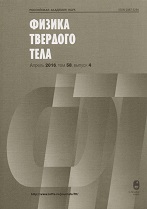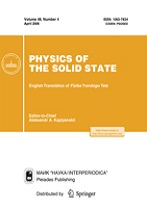|
This article is cited in 5 scientific papers (total in 5 papers)
XVII International Theophilov Symposium, Yekaterinburg, September 23-28, 2018
Low-dimensional systems
New nanosized luminophores obtained via evaporation of REE silicates and germanates
M. G. Zueva, V. G. Ilvesb, S. Yu. Sokovninb, A. A. Vasina, I. V. Baklanovaa
a Institute of Solid State Chemistry, Urals Branch of the Russian Academy of Sciences, Ekaterinburg
b Institute of Electrophysics, Ural Branch, Russian Academy of Sciences, Ekaterinburg
Abstract:
Nanophosphors in the amorphous state are first obtained via pulsed electron beam evaporation of targets made of polycrystalline phosphors with the compositions Ca2M8(SiO4)6O2:Eu (M = Y and Gd) and Cа2La8(GeO4)6O2:Eu with the structure of oxyapatite. Reduction of ions Eu3+→ Eu2+ in the electron beam is found. Modification of the Raman scattering (RS) spectra of the samples in the case of a decrease in the size of the particles from bulk to a nanosized state is found. The change in the forbidden band width Eg of the samples in the case of transition from a bulk powder to an NP is considered. The spectral and luminescence characteristics of the samples in the polycrystalline and nanoamorphous states are studied. It is shown that, in the case of transition to nanosamples, the ligand field around Eu3+ changes. This may be due to the violation of the translational symmetry in the NP. The bond between the 4f and 5d electrons weakens. Degeneracy of the 2eg level appears. Presumably, the reduction of ions Eu3+→ Eu2+ in the electron beam due to the breaking of the Si(Ge)–O bond in the process of evaporation of the samples and capture of the released electron by the Eu3+ ions is found.
Citation:
M. G. Zuev, V. G. Ilves, S. Yu. Sokovnin, A. A. Vasin, I. V. Baklanova, “New nanosized luminophores obtained via evaporation of REE silicates and germanates”, Fizika Tverdogo Tela, 61:5 (2019), 1003–1011; Phys. Solid State, 61:5 (2019), 925–934
Linking options:
https://www.mathnet.ru/eng/ftt8842 https://www.mathnet.ru/eng/ftt/v61/i5/p1003
|


| Statistics & downloads: |
| Abstract page: | 58 | | Full-text PDF : | 16 |
|





 Contact us:
Contact us: Terms of Use
Terms of Use
 Registration to the website
Registration to the website Logotypes
Logotypes








 Citation in format
Citation in format 